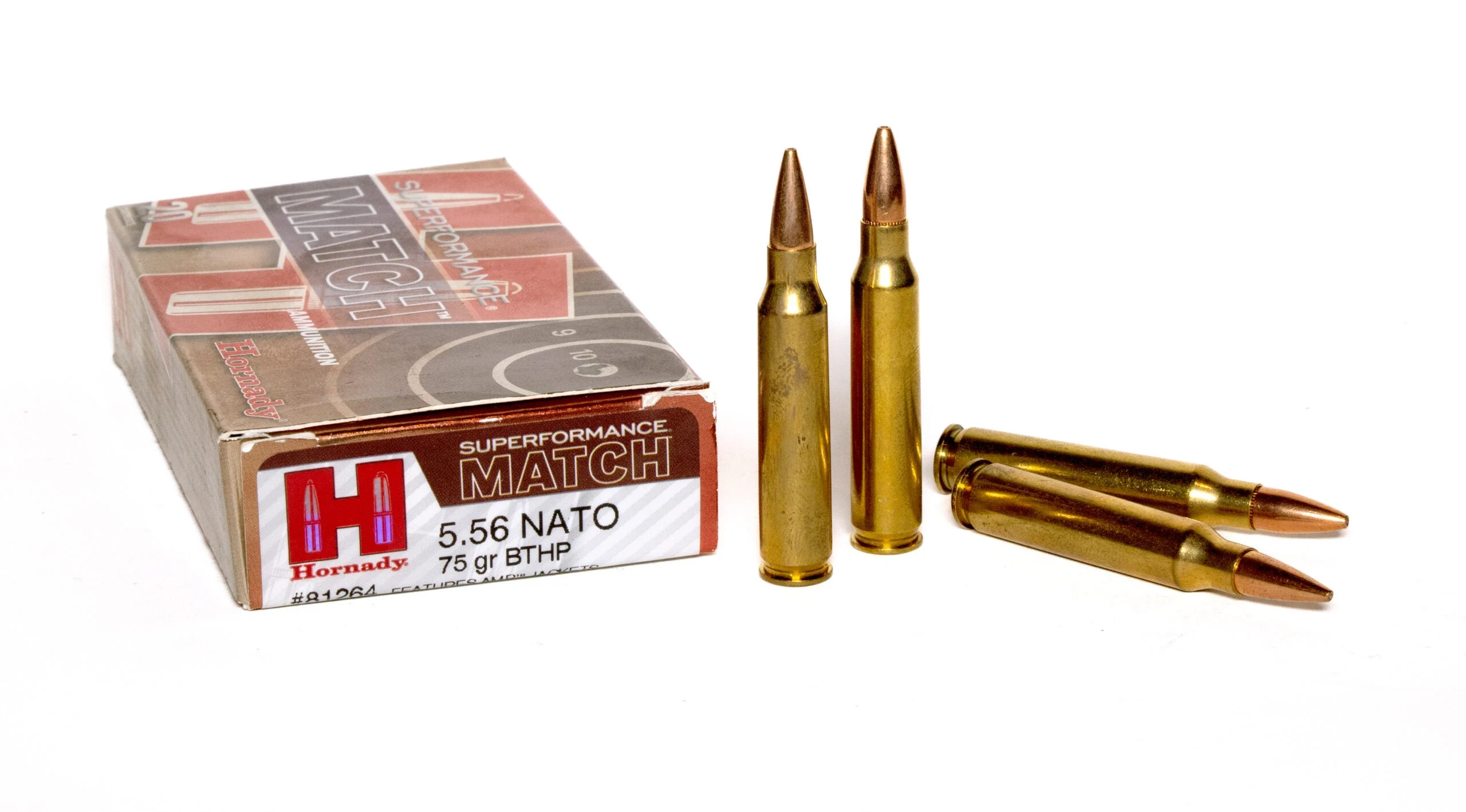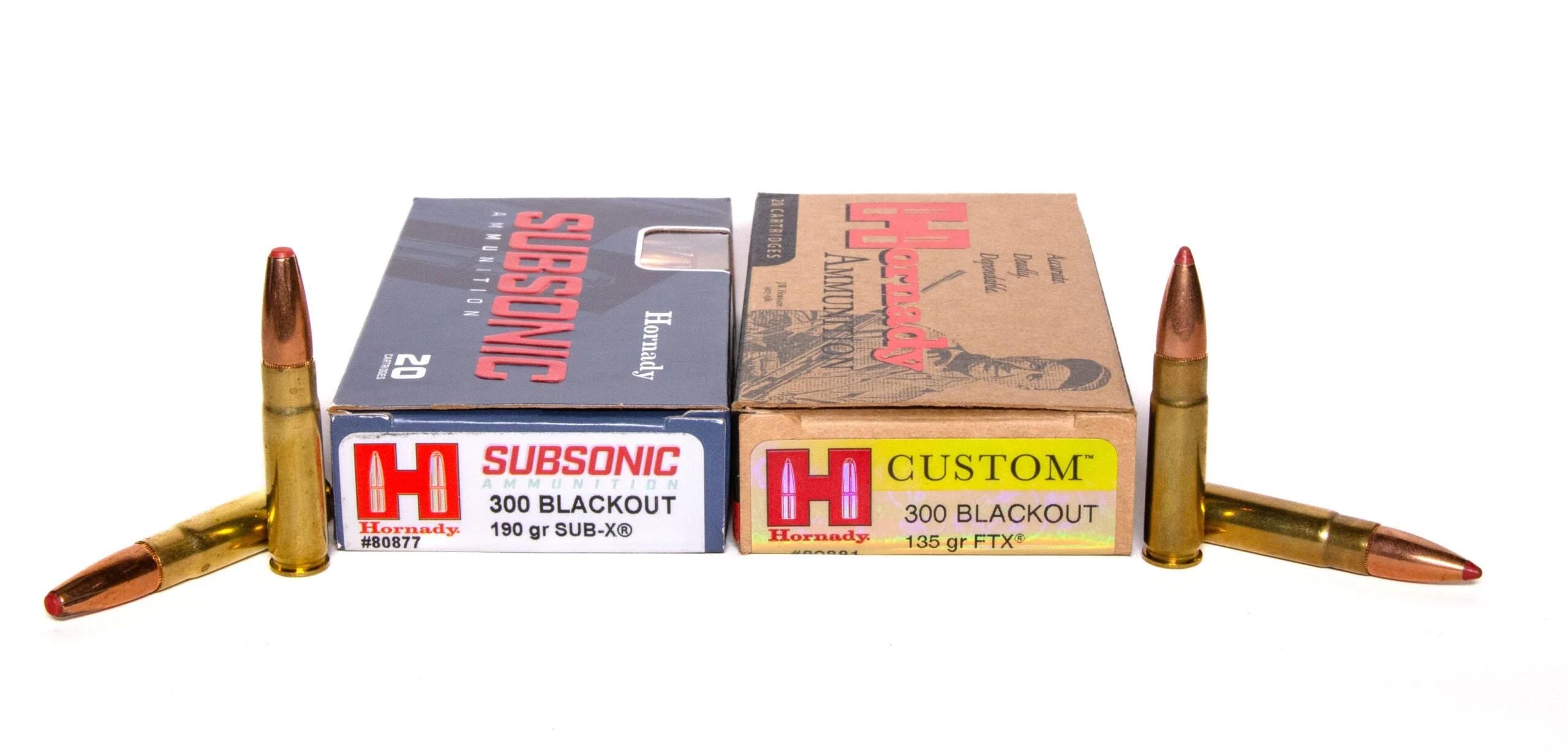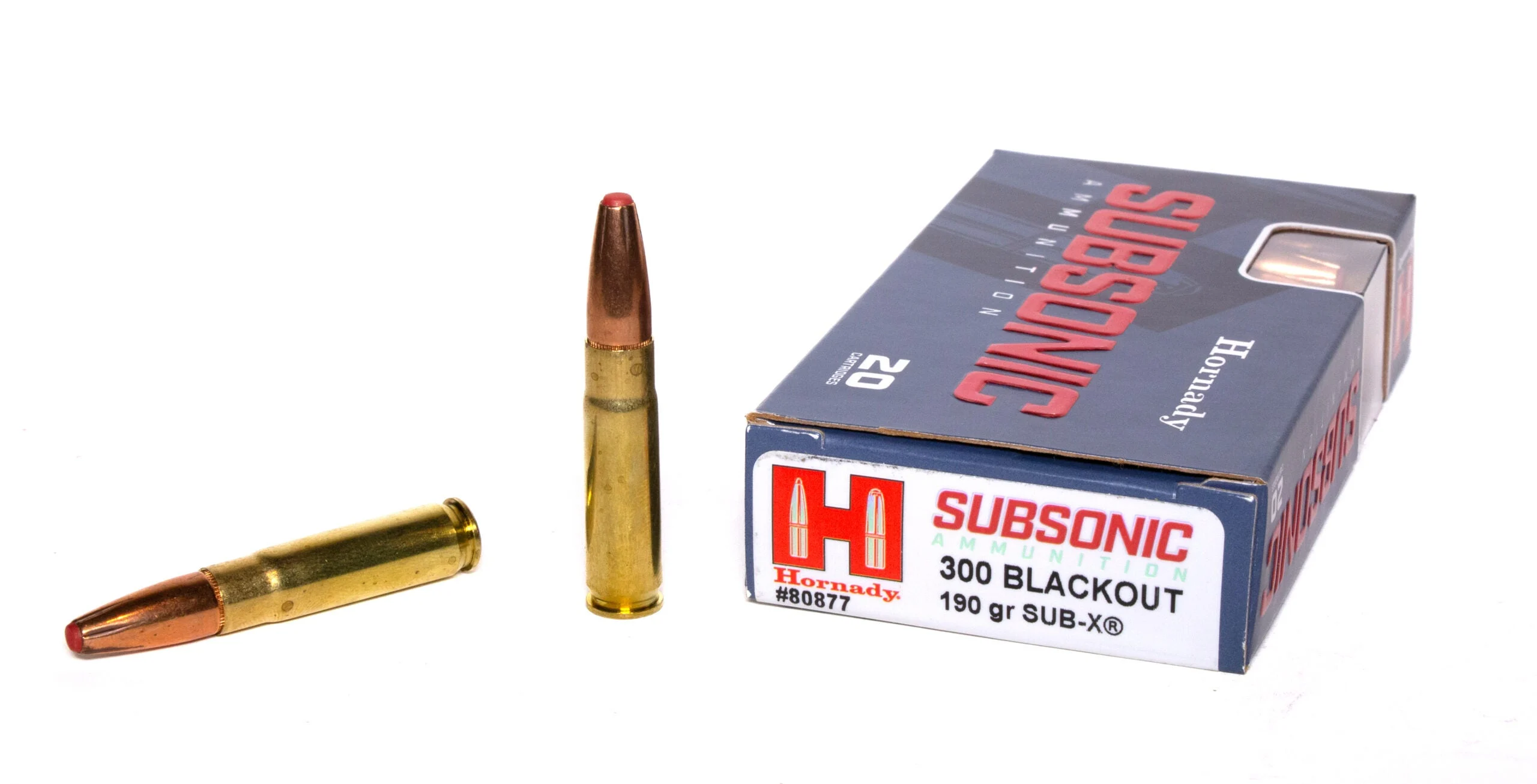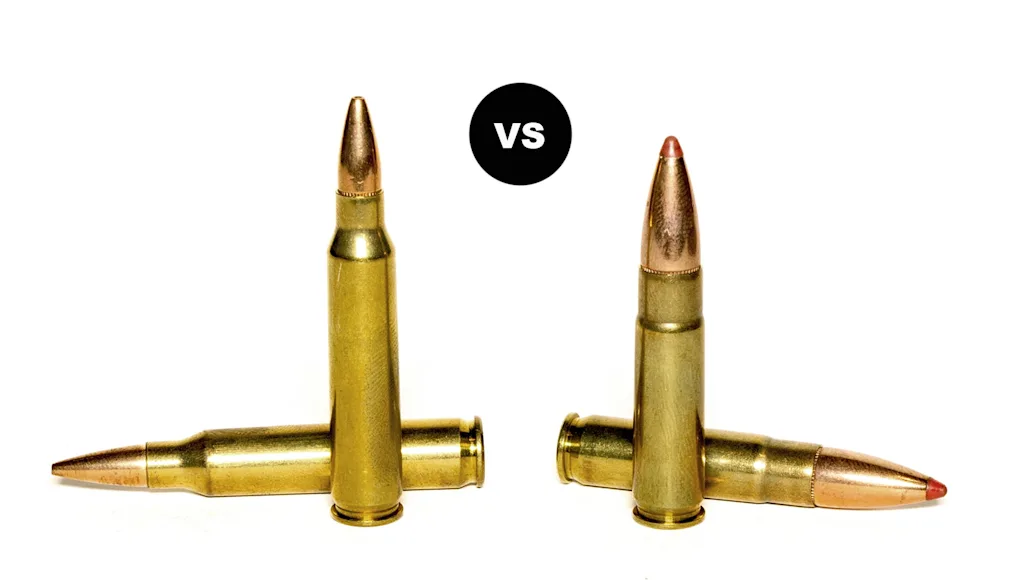_We may earn revenue from the products available on this page and participate in affiliate programs. Learn more ›
_
The 300 Blackout and 5.56x45mm NATO are two of the most popular cartridges commonly chambered in AR-15 rifles, which means if you are looking to buy a new AR, then you may also be considering 300 Blackout vs 556. Without all the facts, it’s hard to make an informed decision. So to help, let’s take a close look at the history of the 300 Blackout and the 5.56 NATO, their ballistics, practical application, and their suitability for suppressed fire. As is often the case in these cartridge comparisons, this one is not so much about which cartridge is the better, but which cartridge is most properly suited to you and what you want to do with it. So, 300 Blackout vs 556—here we go.
The 5.56x45mm NATO

The 5.56 NATO cartridge is almost identical in performance to the 223 Rem. Richard Mann
The 5.56 NATO is a higher pressure military derivative of the 223 Remington. The cartridge has been around since about 1979, and due to the availability of military surplus ammunition, it has become a common chambering in the AR-15. There’s a decent selection of factory recreational ammunition for the 556, but self-defense and hunting ammunition options are a bit limited. With comparable loads, you can do anything with a 5.56 NATO that you can do with a 223 Remington, and you can safely shoot 223 Remington ammunition in a 5.56 NATO rifle. (For more on 233 vs 556 click here
.)
The 300 AAC Blackout

The main appeal of the 300 Blackout is its ability to effectively fire subsonic and supersonic loads. Richard Mann
The 300 Blackout cartridge was introduced in late 2010 by Advanced Armament Corporation (AAC) and Remington and is really just a SAAMI-approved
version of the 300 Whisper wildcat cartridge. There are lots of factory 300 Blackout loads to choose from, with bullets ranging in weight from 110 grains up to 260 grains. Though touted as the equivalent of the 30-30 Winchester, it’s substantially less powerful; it’s much closer in performance to the 7.62x39mm Russian cartridge. Due to the 300 Blackout’s compatibility with subsonic ammunition and the subsonic loads offered for it, it’s largely responsible the current interest in suppressed shooting.
300 Blackout vs 556 Ballistics
The 5.56 NATO pushes lighter bullets at faster velocities, while the 300 Blackout launches heavier bullets at moderate and subsonic velocities. Ballistically, these cartridges are not in the same category; the 5.56 NATO shoots much flatter and at distance retains more velocity and energy. For example, at 300 yards, the 135-grain 300 Blackout load only has 546 foot-pounds of kinetic energy and is traveling at a meager 1349 fps. At that velocity, bullet upset is questionable. On the other hand, at 300 yards the 5.56 NATO’s 70-grain load will impact with 657 foot-pounds with a velocity of more than 2000 fps, guaranteeing bullet upset. Regardless the target, beyond 200 yards, the 300 Blackout simply cannot compete with the 5.56 NATO.

This chart compares the ballistics of the 556 and 300 Blackout, including bullet drop with a 100-yard zero. Richard Mann
But ballistics alone are not enough for a meaningful comparison. You also need to consider the gun, distance, target, and application. If you’re shooting paper, energy doesn’t matter, and if you’re shooting inside 100 yards, trajectory matters little as well. So, since both cartridges are commonly fired from the same AR-15 style rifle, to accurately compare how they stack up, you really need to look at intended use.
300 Blackout vs 556: Recreational/Competition Shooting
You don’t have to kill paper targets or steel; generally a hit is all that’s required. If your recreational or competitive shooting is limited to around 150 yards, both cartridges will perform equally well, but the 300 Blackout is poorly suited to any distance much beyond 200 yards. Another important consideration is volume shooting. If you’re going to shoot a lot—whether you use factory ammunition or load your own—you can shoot the 5.56 NATO for about half the cost of the 300 Blackout.
300 Blackout vs 556: Hunting

Both cartridges can be effective for hunting inside 150 yards. Beyond that, the 556 has the edge. Richard Mann
Both cartridge can deliver good precision, but once the range exceeds 200 yards, hits with the 5.56 become easier. Similarly, bullet performance at distance is less than ideal with the 300 Blackout due to low impact velocities. Though some believe the larger and heavier 0.30-caliber bullet gives the Blackout an edge, it’s only true at distances where the bullet will actually deform after impact. At 200 yards and beyond, the 556 hits just as hard and with more velocity to drive bullet upset and damage tissue. With its flatter trajectory, the 556 is also better for varmints and predators. However, inside 150 yards, the Blackout might have an edge on larger game. Also, there are a few states where the 5.56 NATO is not legal for deer hunting.
Home Defense and Survival
The AR-15 platform is very popular for home defense and survival applications. At short range, both cartridges are effective for these purposes; the 300 Blackout has the advantage of bullet diameter and weight while the 556 has the velocity. If there’s an advantage, it’s the 300 Blackout’s ability to work more efficiently from shorter barrels, fire subsonic ammunition, and be very quiet when suppressed.
Suppressed Shooting

There’s a wide assortment of subsonic ammunition for the 300 Blackout, and suppressed subsonic shooting is where it really excels. Richard Mann
When it comes to 300 Blackout vs 556, this is where the Blackout has a true advantage. You can run either cartridge with a suppressor, and with supersonic ammunition noise reduction will be similar. However, with subsonic loads, the Blackout is much quieter. Although, you must be careful when selecting subsonic 300 Blackout ammunition if you want bullets to deform on impact. With some—even those advertised for hunting or defense—the bullets will only show minimal upset.
Final Thoughts on 300 Blackout vs 556
Aside from the extreme quietness of the 300 Blackout when shooting subsonic ammunition, the cartridge has only a few advantages to offer when compared to the 5.56 NATO. You can argue the advantage of a bullet that’s larger and heavier, but the velocity advantage of the 5.56 NATO evens a lot of this out, especially when shooting at distance. The 556 also less expensive to shoot. With the Blackout, you have the option of supersonic or subsonic ammo, and with the 5.56, you can also shoot 223 Remington ammo. So both cartridges are—in different ways—versatile.
If suppressed subsonic shooting and close-range defense suitability is your main consideration, or if you cannot deer hunt with a 0.22-caliber cartridge, the 300 Blackout is the clear choice. For everything else, the 5.56 NATO is hard to beat. The beauty of these cartridges is that with a complete upper receiver for each, you can utilize both on the same AR-15 lower receiver. And if you have a .30-caliber suppressor, it can be used with both also. However—and consider this a warning—it’s possible for some 300 Blackout ammunition to chamber in a 5.56 rifle. If that happens, and the rifle is fired, the results can be catastrophic to the gun and dangerous to you! If you’re going to use both, be sure to keep the ammunition separate, and double-check what you are loading into your rifle.






